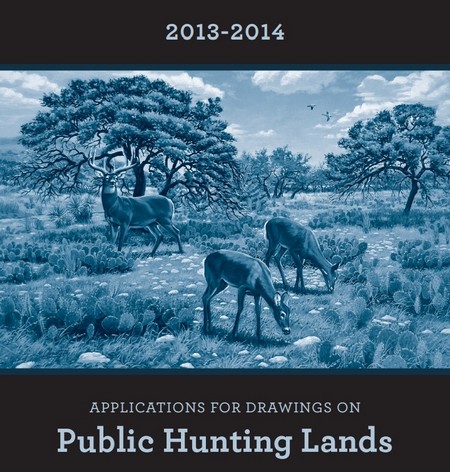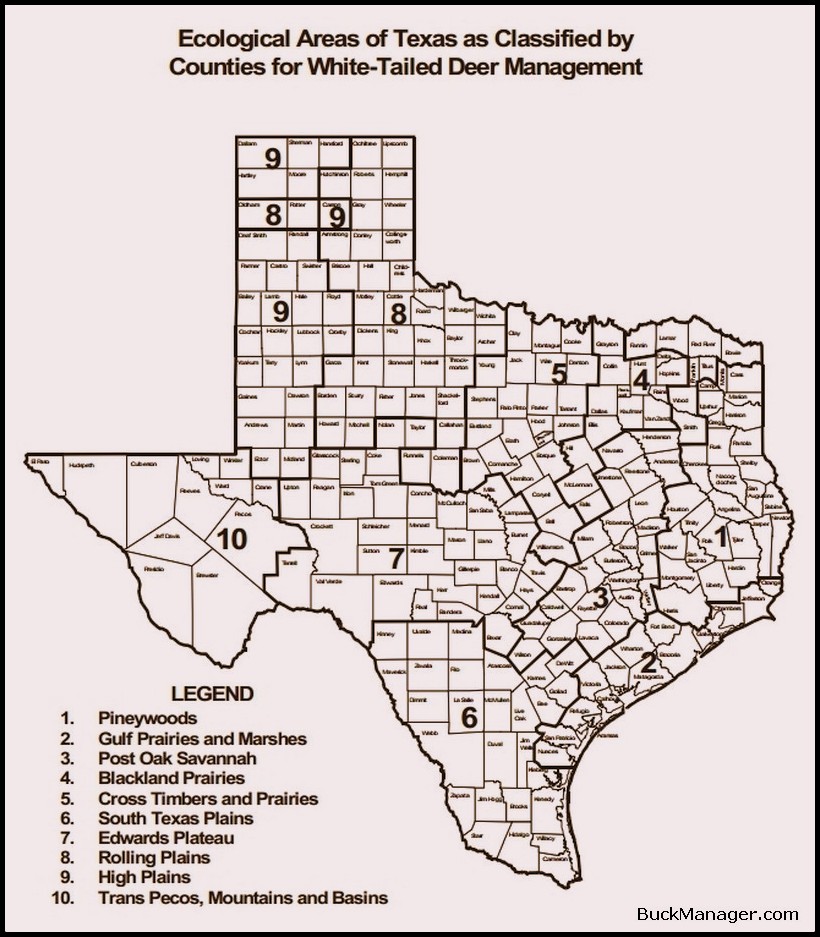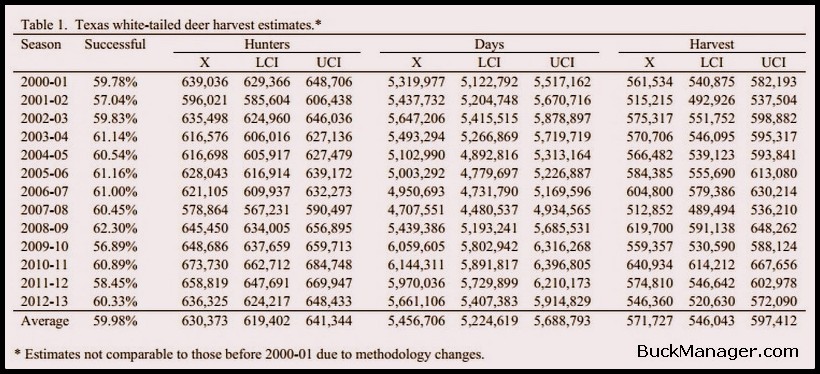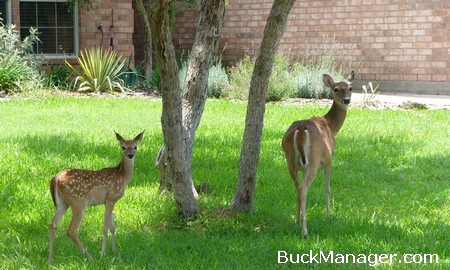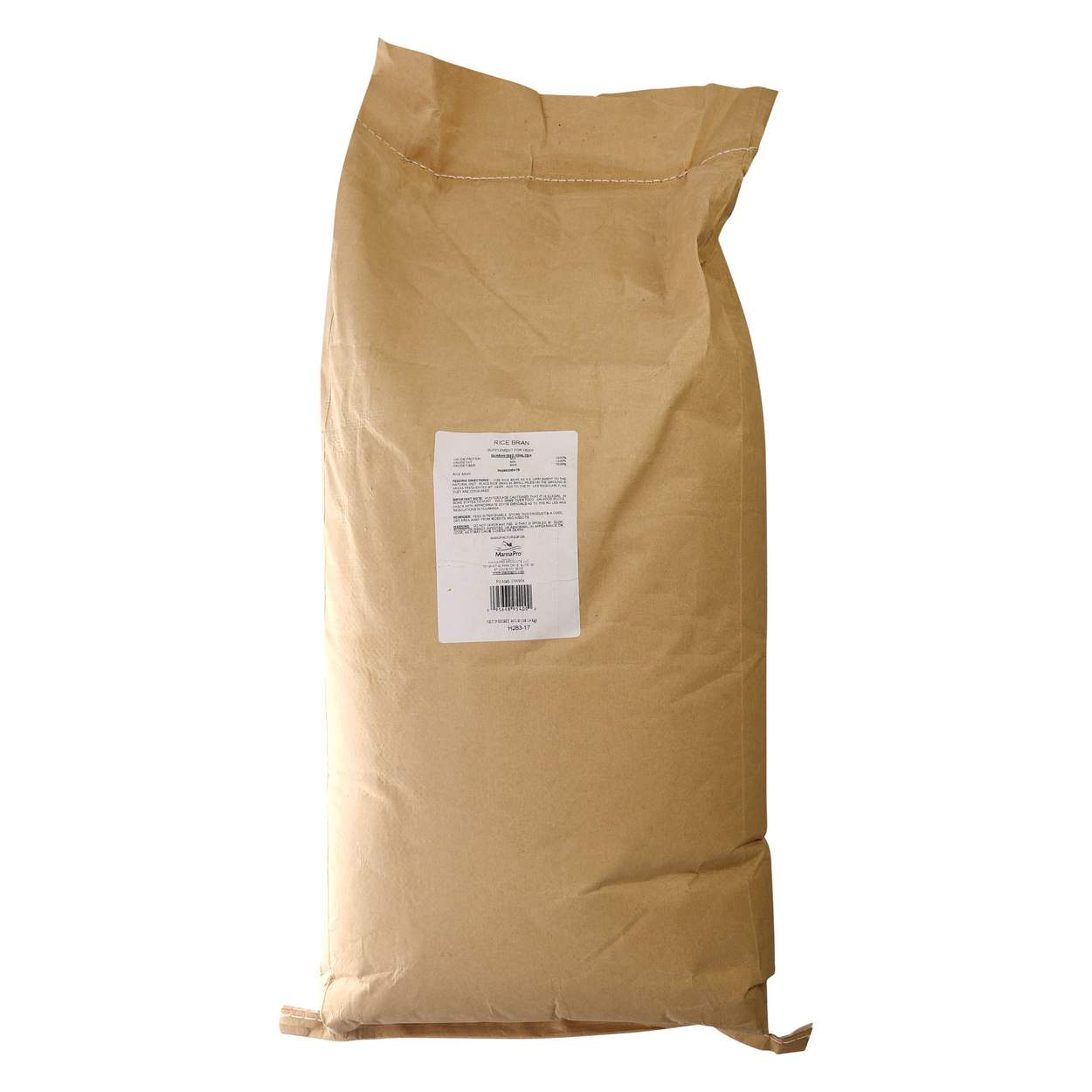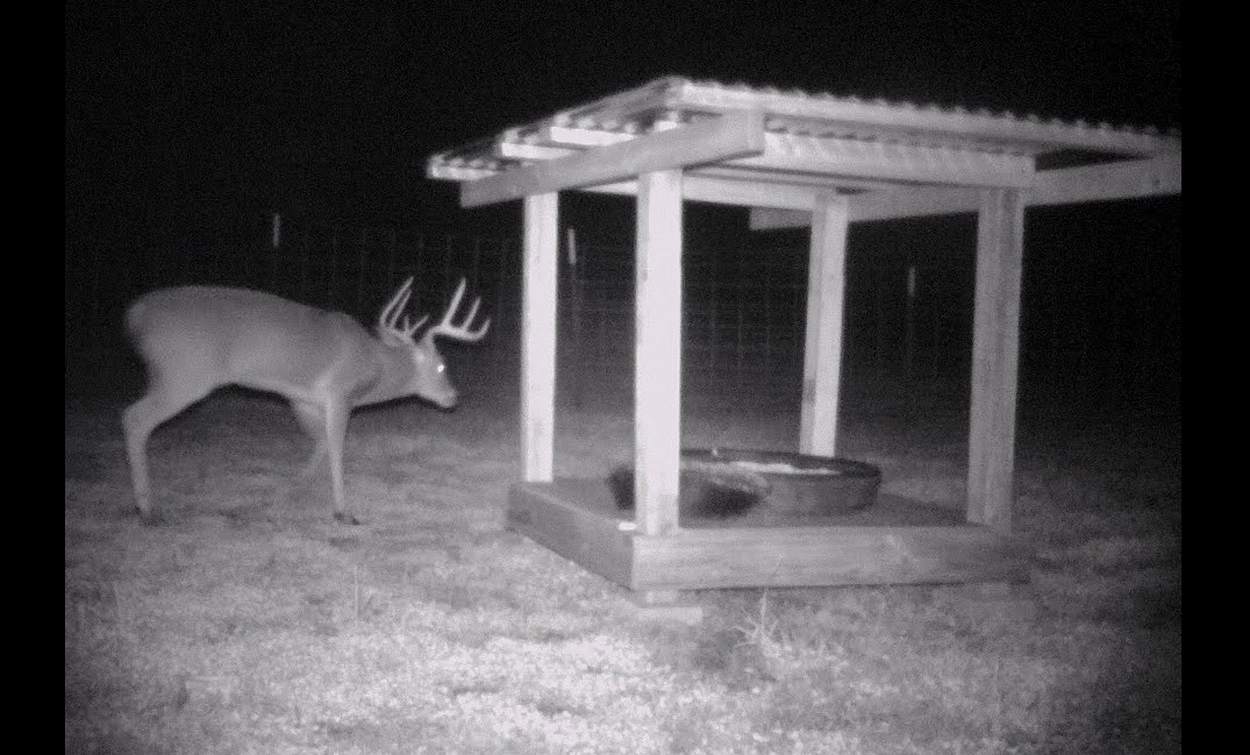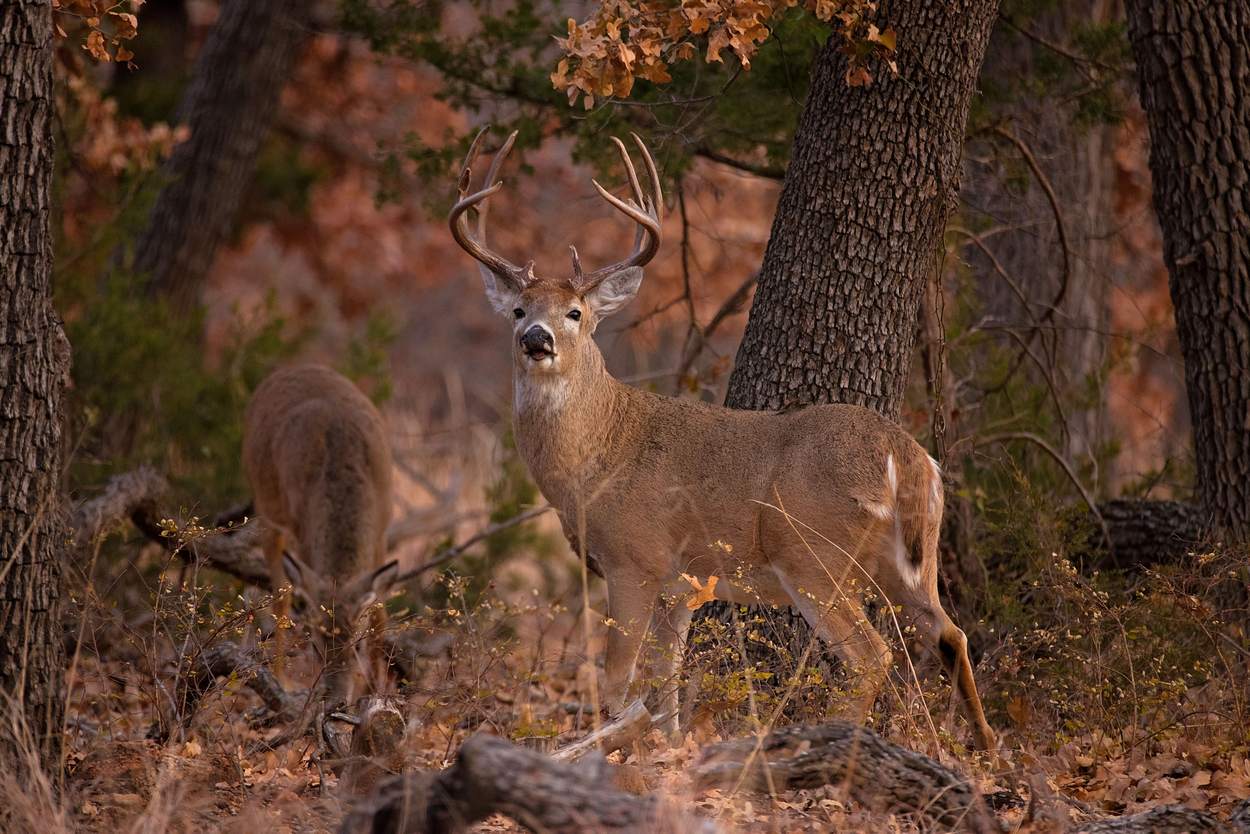A big part of white-tailed deer management is food. Getting adequate nutrition to animals is the best way to ensure all deer live up to their potential, whether it be bucks growing exceptional antlers or does producing and raising fawns year after year. It takes food to make that happen. Habitat management helps promote the right plants for deer, but it still takes rain to make them grow. Spring is typically the best time of the year for deer because of the availability of high protein forbs. This year, although not stellar, is far from bad. I’ve seen only a few deer over the past month; they just don’t have to move because the good stuff is literally at their feet.
The foods that grow in good deer habitat are the very best for whitetail, but the problem is that they do not always grow. With the Summer season and its mercury-busting temperatures just around the corner, it’s safe to assume that those protein-rich forbs will be going bye-bye here shortly. It is during that time of year when bucks will still be actively growing antler and the energy demands of does will be high due to hungry, rapidly-growing fawns that will be in tow. When soils dry up, the supplemental feeding of deer can help fill the void on the landscape as well as in the bellies of the deer that live there.
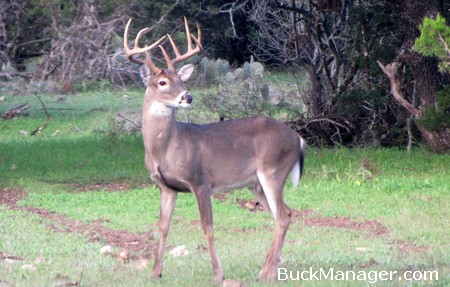
Free-choice protein feeders are an efficient way to supplement the diets of deer, but have you ever noticed that most of the time you will get a lot more photos of bucks than does? Many hunters have been “misled” by buck use of feeders during the summer months only to realize come hunting season that they have many more does than they thought — and all those bucks that were “living” at the feeder are gone. What gives?
TAMUK: “It’s a proven fact that supplemental feed improves antler growth and body size. Numerous scientific research projects have shown this. However, one question that hasn’t been addressed extensively is feed site use. It’s commonly accepted that all deer are accessing these feeders. But, are they?
Are all age classes and both genders of deer getting ample opportunity to access this high-powered feed? Chase Currie, a Ph.D. candidate at Texas A&M University-Kingsville, has been working for two years on a research project that, in part, addresses that very question. What he’s found are some interesting and significant patterns relative to white-tailed deer use of feed sites.
Specifically, Currie assessed feed site visitation between sexes and among age classes seasonally. Seasons were categorized according to the physiology of deer in South Texas. For example, spring was designated as the recovery period following the rut; summer, the production period when males were growing antlers and females were nearing parturition and entering lactation; autumn, the recovery period for females following lactation and the pre-rut period for males when they were bulking up; and winter, the rut.
In March, September and November of 2010 and February, March and April of 2011, 240 deer were captured in South Texas using the helicopter net gun method. Each captured deer was tagged with two uniquely colored and numbered ear tags, one in each ear.
To assess feed site visitation, motion-triggered cameras were strategically located to survey feed sites. Cameras were set with a one minute delay and deployed at each feed site for one week each month throughout the two years. Over the course of the study, Currie accumulated 8,000 camera nights and just over 90,000 photos.
During the first year of the study, feed site density was 1/130 acres, and in the second year, feeder density was nearly doubled to 1/75 acres. Also, during the first week of the first year, it became immediately evident that feed sites needed to be fenced due to the excessive use by non-target species such as feral hogs. Thus, from the second week forward, data collected was from fenced feed sites.
To assess feed site visitation, Currie looked at the proportion of the male, female and fawn population that visited feed sites. Furthermore, he assessed intensity of feed site use for those deer that visited a feed site at least once during the sampling period (one-week). He did so by assessing the number of photos per individually marked deer on a weekly basis, the number of nights per week individually marked deer visited feed sites, and he also looked at the number of feed sites individually marked deer visited per night during the week.
Results indicated that bucks visited the feed sites more often and at a higher intensity than does. Furthermore, buck visitation was highest during spring and autumn. Only about 20 percent of marked does visited feed sites each month.
Fawn visitation was low across the board, so much so, that Currie was only able to assess the proportion of fawns that visited feed sites and not their intensity of feeder use. Photo evidence indicated one reason fawn visitation was low was that fawns had difficulty accessing the feeders. Recall that all feeders were fenced during the second week of the first year of the study, and doing so apparently excluded the fawns.
Despite doubling feed site density in the second year of the study, there was no difference in feed site visitation between bucks and does between the two years. Thus, in presenting the feed site visitation data, he averaged data across the years by season. The data revealed that feed site visitation for bucks was highest during spring and summer and lowest in winter, particularly in December, most likely because of the rut. Does, however, visited the feed sites most intensively during the winter from about November to December, with the highest visitation occurring in December. Researchers attributed this to the fact that buck visitation dropped off during this time period, thus, the does had an easier time accessing feeders.
Looking at the number of nights per week deer visited feed sites, data showed that in spring and autumn, bucks were visiting feed sites roughly four nights per week, and in summer, it dropped down to around three nights per week. However, again when winter came around, the number of nights per week that bucks visited feed sites dropped off significantly. Also during the winter, there was very little difference in the number of nights per week does and bucks visited feed sites. However, during December, the number of nights per week does visited feed sites exceeded that of bucks, which again implies that does were taking advantage of the time that the bucks were not utilizing feed sites.
In terms of the number of feeders per night deer visited during the week, in 2010, only 5 percent of the males visited more than one feed site per night, whereas in 2011, only 9 percent visited more than one feed site per night. For the most part, females only visited one feed site per night.
As is often the case in South Texas, 2010 and 2011 were totally different years in terms of precipitation. In 2010, plentiful rains made for really good range conditions, but 2011 was one for the record books. It was the driest one-year period in over 100 years in most parts of the state, and South Texas was no exception. Given this, one might assume that visitation rates at feed sites would be higher in 2011, compared to 2010, when range conditions were much better. However, that was not the case. Furthermore, in 2011 when feeder density was doubled to 1/75 acres, an excessive amount by most standards, and with the drought raging, feed site visitation did not increase. In fact, there was no difference in feed site visitation or intensity of feed site use between the two study years. In particular, a very low proportion of females and fawns visited feed sites, irrespective of range conditions and feeder density.
Researchers hypothesized that something else must be going on. Thus, to investigate further, researchers assessed movements of whitetails relative to feed sites. To do so, during both of the study years, 45 of the 240 deer captured were also equipped with a GPS collar. Collars were designed to pinpoint a location of individual deer every 30 minutes from March through January the following year, which resulted in 15,000 to 16,000 locations per deer over the course of the year.
What they discovered was that though the does had ample opportunity to access feeders, there were only a few actual locations pinpointed around the feeders. In fact, 13 females were collared in 2010, and eight of those 13 females didn’t have a single location within 55 yards of a feed site.’It was almost as if there was a buffer around these feed sites,’ remarks Currie. The collared bucks, however, during the same time, had clusters of locations pinpointed all around the feed sites.
Currie and others involved in the research hypothesize that social interactions, perhaps a form of social dominance or social hierarchy, are keeping does from regularly accessing feed sites. Thus, fellow graduate student Robin Donohue further investigated the role of aggressive behavior at feeder sites.
Specifically, Donohue investigated whether population density or season affected aggressive interactions between genders and among age groups of white-tailed deer. Also, he was interested in determining the severity of interactions at feed sites. Support for this project was provided by T. Dan Friedkin, the Comanche Ranch, the Stedman West Foundation, and the Faith Ranch.
This project was conducted in the northwestern portion of South Texas in Dimmit and Maverick counties in 6,200-acre enclosures on the Faith and Comanche Ranches. Again, trail cameras, set to take one photo every second for 10 seconds, were used during a two-week period in March, August, October and December.
Donohue established a scoring system to evaluate the severity of interactions among deer. At the bottom of that scoring system, defined as ‘less severe,’ included actions like non-aggressive dominance, ear drop, hard look, the head low threat or the head high threat, and then the sidle, whereby a deer turns to the side and then walks toward the opponent. Some of the more severe interactions including strike, chase, or the antler threat, the rear – where the animal rears up on its hind legs – then the flail, in which the deer flails its front legs in a peddling motion towards the opponent, or the rush.
Not surprising, researchers found again that bucks two years of age and older were dominant over yearling bucks, does and fawns in over 95 percent of the interactions, with one exception. During summer, does won about half of the interactions with bucks in low density pastures, whereas, in high-density pastures, does only won 5 percent of interactions. Low density, in this case, was a deer for every 20 acres; high density was a deer to every five acres.
When bucks were not present, does dominated fawns 100 percent of the time. Breaking it down further, Donohue found that during the summer, does actually dominated yearling bucks roughly 60 percent of the time. However, as the year progressed and those same yearling bucks approached the 2-year-old cohort, they begin to act more like mature bucks, dominating does roughly 80 percent of the time.
The rate of interactions is a measure of how likely two deer are to have an aggressive interaction when at least two deer are present at a feed site. The rate of aggressive interactions increased as deer density increased, suggesting increased tensions at feed sites at higher deer density. Although deer were more likely to interact at feed sites with increasing deer density, the severity of interactions did not increase. About 10 percent of interactions were severe (that is involved physical contact) at all deer densities.
The data suggests there is some form of sexual segregation occurring at these supplemental feed sites. Researchers point out that those feeders may not be the only areas where these kinds of social dominant interactions are occurring. It’s possible that whitetails may exhibit similar patterns at water sites and in areas where palatable nativevegetation is most abundant.
In general, though, with respect to feed sites, bucks dominate, irrespective of season; the social relationship between does and yearling bucks is affected by season, and fawns are typically subordinate, regardless of age and season. Also, as population increases, the rate of aggressive interaction increases, and the degree to which does avoid bucks decreases.
The take home message is that all deer are clearly not accessing feeders. In fact, based on Currie’s research, only 20 percent of the doe population visited feed sites, with the fawn population exhibiting even lower visitation rates. There are some obvious management implications. Exclusive of the social interaction issue, managers may be able to increase fawn visitation by improving accessibility to feeders. Fencing out non-target animals is essential, particularly in areas where feral hogs and javelinas are a problem, but doing so often excludes the fawns, as well. Thus, managers may want to make the fences more fawn friendly by raising or reducing the height of the fence.
It is beneficial for does to have access to supplemental feed in order to produce healthy fawns, but at this point, there are not good options for increasing doe use of feed sites.”
